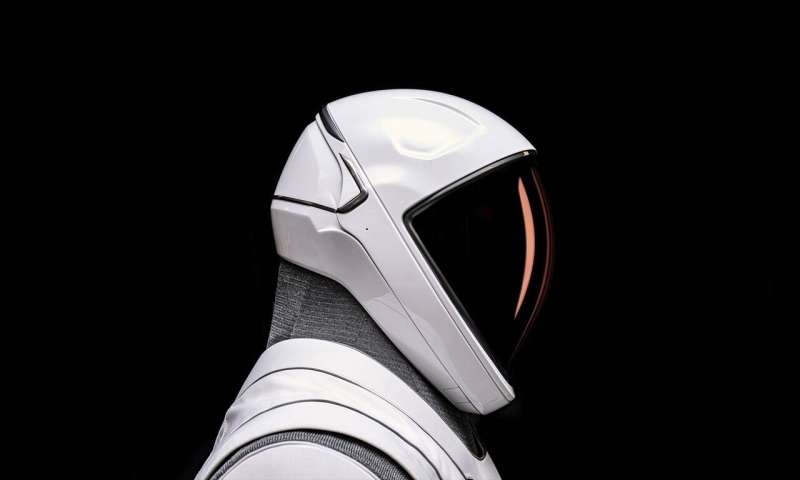SpaceX just revealed the EVA suits their Polaris commercial astronauts will use. Credit: SpaceX
In February 2022, SpaceX and entrepreneur/philanthropist Jared Isaacman (commander of the Inspiration4 mission) announced they were launching a new program to "rapidly advance human spaceflight capabilities" while supporting important charitable and humanitarian causes here on Earth. It's called the Polaris Program.
In a recent press release, SpaceX revealed the spacesuits its Polaris astronauts will be wearing and described the research that the crews will conduct during the program's three human spaceflight missions—the first of which is scheduled to launch this summer.
These missions will build on the company's experience with NASA's Commercial Crew Delivery (CCD) program, where NASA certified SpaceX's Crew Dragon vehicle to transport crews to the International Space Station (ISS). According to the company's press statement, the new suits are an evolution of the Intravehicular Activity (IVA) suit currently used by Dragon crews. This included the crew of the Demo-2 mission, which validated the flight system and was the first crewed mission to take off from U.S. soil since the retirement of the Space Shuttle in 2011.
It was also the suit worn by the Inspiration4 crew as they became the first flight to be crewed entirely by private citizens. These latest are known as the Extravehicular Activity Space Suit, which has several new features. Per the company's press statement, "Developed with mobility in mind, SpaceX teams incorporated new materials, fabrication processes, and novel joint designs to provide greater flexibility to astronauts in pressurized scenarios while retaining comfort for unpressurized scenarios."
The suit also has redundancy features, such as additional seals and pressure valves to help ensure the suit remains pressurized during EVAs. The new 3D-printed helmet incorporates a new visor that reduces glare and features a camera and a new Heads-Up Display (HUD) that monitors conditions inside the suit.
These suits will make their debut during the first of three Polaris missions—Polaris Dawn—scheduled to take place this summer (at the earliest). This mission will be commanded by Isaacman and will see a Crew Dragon launched from Launch Complex 39A atop a Falcon 9 rocket. The crew will spend five days in orbit and attempt to reach the highest Earth orbit ever flown.
During their time in space, the Polaris Dawn crew will conduct the first commercial spacewalk (and the first EVA where four astronauts were in space simultaneously) and be the first to test the Starlink laser-based communication system in space.
The crew will also conduct scientific research in collaboration with the Translational Research Institute for Space Health (TRISH), BioServe Space Technologies, Space Technologies Lab, Weill Cornell Medicine, the Johns Hopkins University Applied Physics Laboratory (JHUAPL), the Pacific Northwest National Laboratory, and the U.S. Air Force Academy.
These efforts are designed to advance our understanding of human health during long-duration spaceflights, with applications for health here on Earth. According to the company website, these research activities will include:
- Using ultrasound to monitor, detect, and quantify venous gas emboli (VGE), contributing to studies on human prevalence to decompression sickness;
- Gathering data on the radiation environment to better understand how space radiation affects human biological systems;
- Providing biological samples towards multi-omics analyses for a long-term Biobank; and
- Research related to Spaceflight Associated Neuro-Ocular Syndrome (SANS), which is a key risk to human health in long-duration spaceflight.
Polaris Dawn will be followed up by a second mission (Polaris II, the date of which is TBD) that will attempt to build upon these objectives. The third mission (Polaris III) will be the first human spaceflight involving the Starship and Super Heavy launch vehicle. But as is made clear in the company's statement, the suits are intended to fulfill SpaceX's long-term goals:
"While Polaris Dawn will be the first time the SpaceX EVA suit is used in low-Earth orbit, the suit's ultimate destiny lies much farther from our home planet. Building a base on the moon and a city on Mars will require the development of a scalable design for the millions of spacesuits required to help make life multiplanetary."
Provided by Universe Today
























